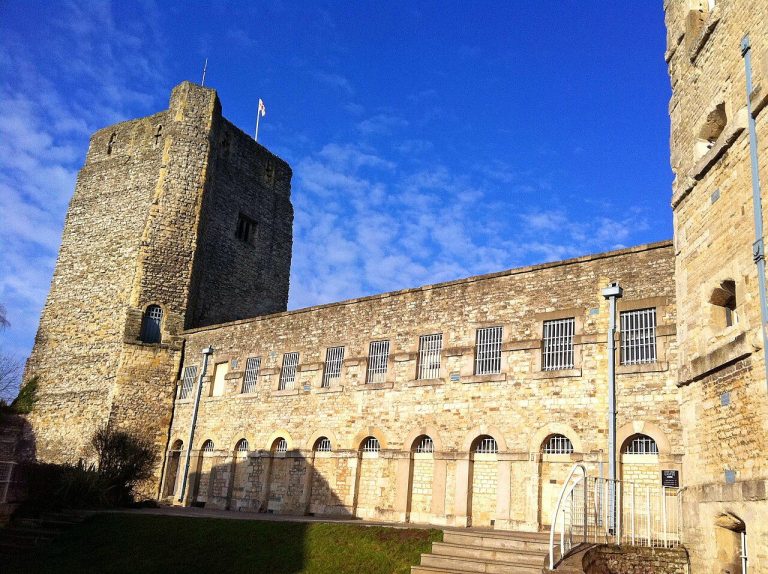OXFORD CASTLE AND PRISON

St George's Tower, Oxford Castle, viewed from the Castle Mill Stream

Oxford Castle, around 1250. A: The keep and motte; B: St George's Tower and Chapel; C: The Round Tower; D: River Isis; E: Moat; F: City wall; G: West Gate; H: Barbican

Oxford Castle prison.
OXFORD CASTLE
Oxford Castle is a large, partly ruined medieval castle. Most of the original moated, wooden motte and bailey castle was replaced in stone in the late 12th or early 13th century and the castle played an important role in the conflict of the Anarchy. In the 14th century the military value of the castle diminished and the site became used primarily for county administration and as a prison. The surviving rectangular St George's Tower is now believed to pre-date the remainder of the castle and be a watch tower associated with the original Saxon west gate of the city.
Most of the castle was destroyed in the English Civil War and by the 18th century the remaining buildings had become Oxford's local prison. A new prison complex was built on the site from 1785 onwards and expanded in 1876; this became HM Prison Oxford.
The prison closed in 1996 and was redeveloped as a hotel and visitor attraction. The medieval remains of the castle including the motte, St George's Tower and crypt, are Grade I listed buildings and a Scheduled Monument.
Oxford Castle was built by the Norman baron Robert D'Oyly the elder from 1071 to 1073. D'Oyly had arrived in England with William I in the Norman Conquest of England and William the Conqueror granted him extensive lands in Oxfordshire. Oxford had been stormed in the invasion with considerable damage, and William directed D'Oyly to build a castle to dominate the town.
We need your consent to load the translations
We use a third-party service to translate the website content that may collect data about your activity. Please review the details in the privacy policy and accept the service to view the translations.